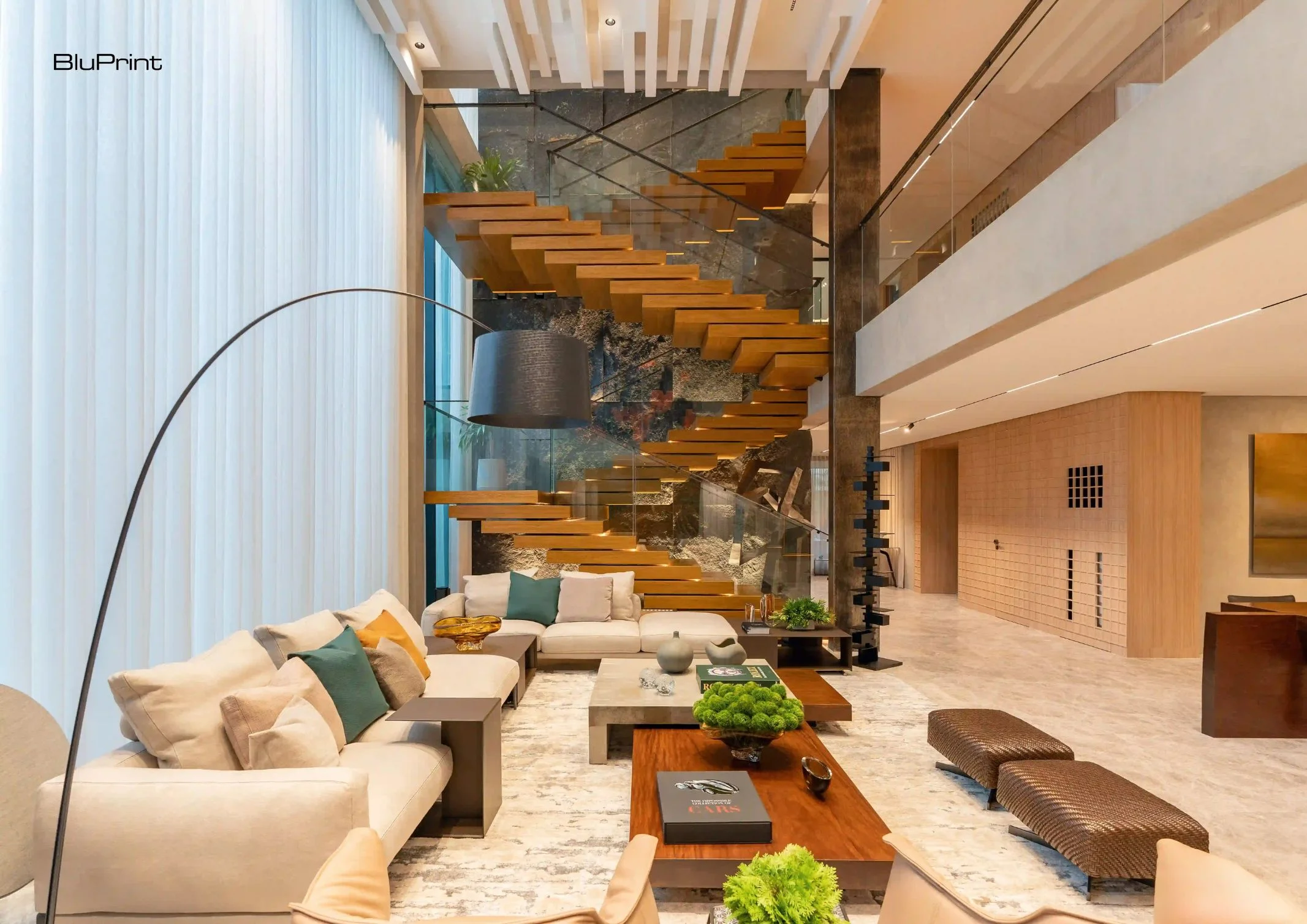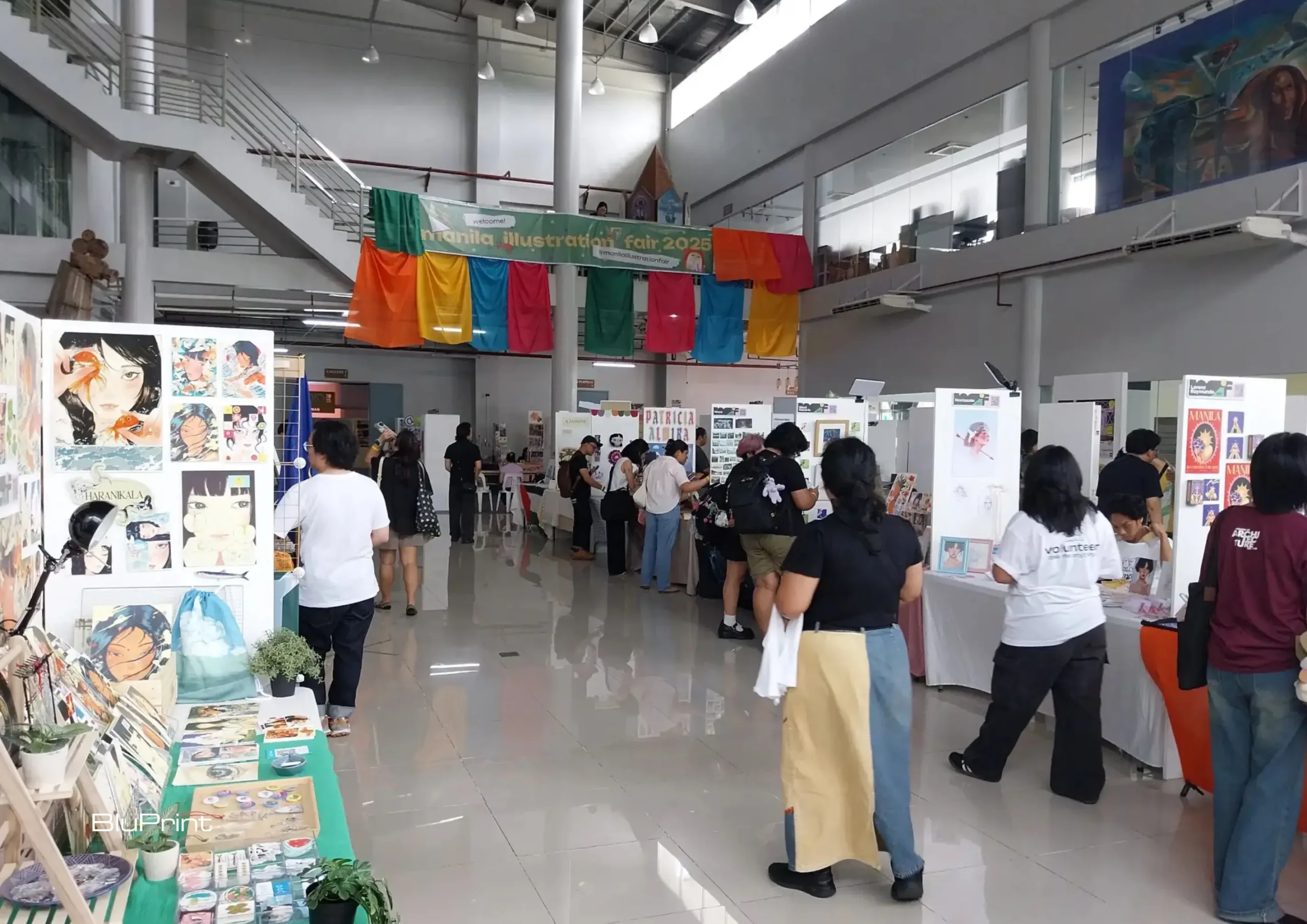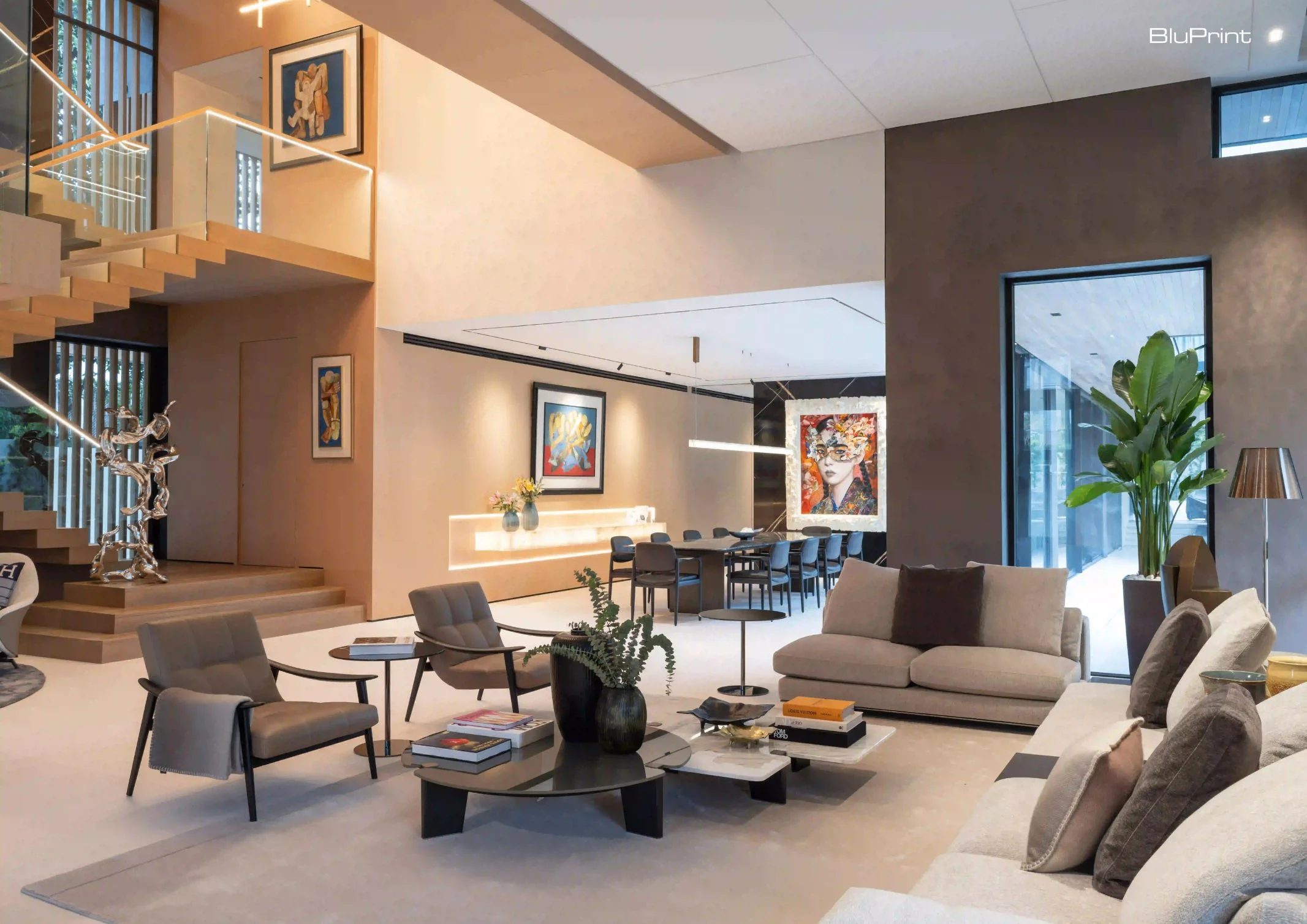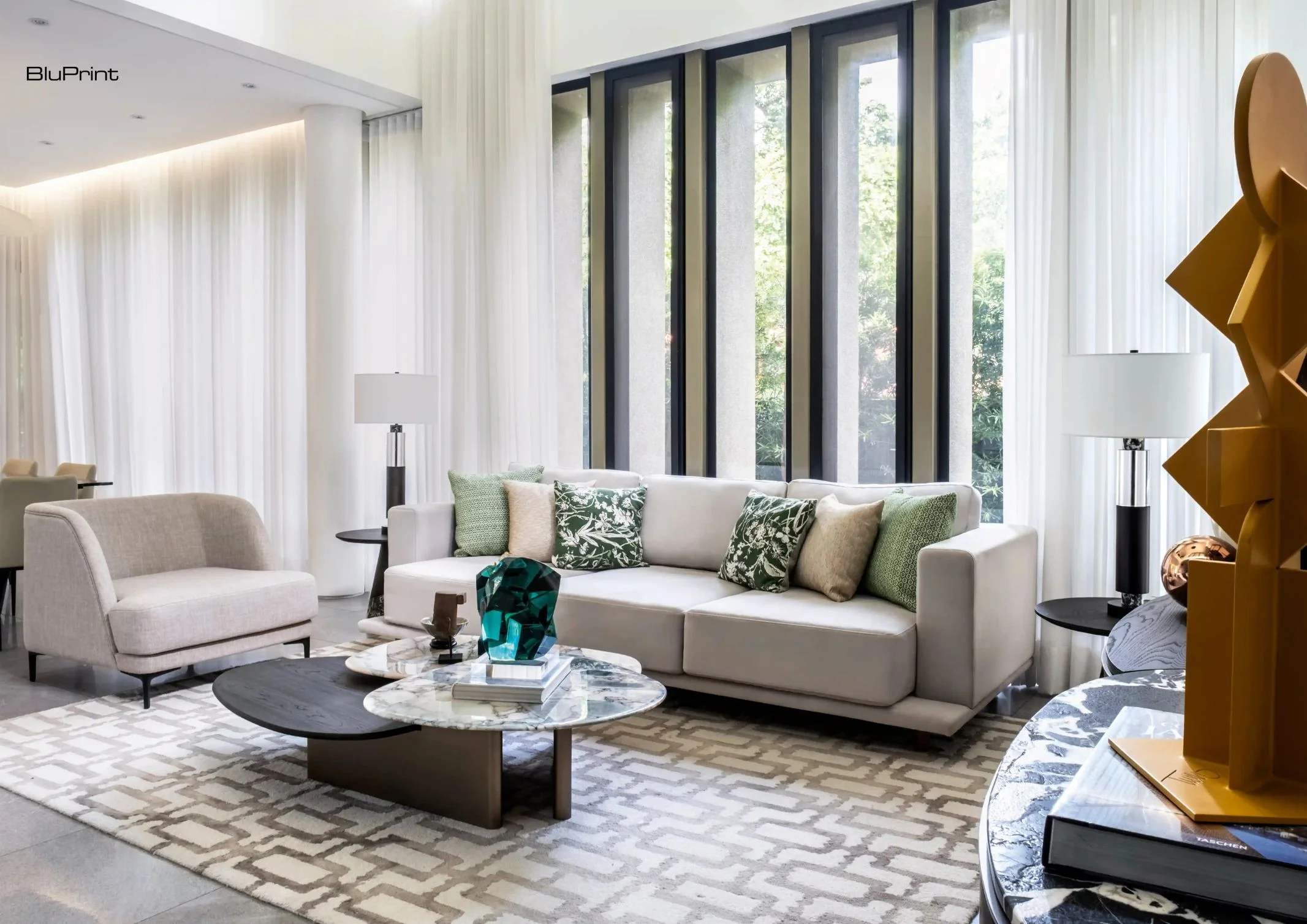The moment you step inside his home, it becomes clear that art here is not mere decoration. Paintings rise floor to ceiling, sculptures command the corners, and every wall carries a story. The rooms unfold like a living gallery where masters stand alongside emerging voices, and where each piece is not only displayed but lived […]

‘Sintang Dalisay’ Modernizes Shakespeare for a New Age
Sintang Dalisay, an adaptation of William Shakespeare’s Romeo and Juliet, recently finished a second run of six shows at the Hyundai Theater at Areté, Ateneo de Manila after a successful first run last 2024.
The show, which was first performed in the late 1990s, is set in a pre-colonial Mindanao community as two people from opposing families, Rashiddin and Jamila, fall in love with each other. The two face hostility and resistance from their family members and community, ultimately leading to the young lovers’ deaths.

It was written and composed by Edru Abraham and Jayson “Dyandi” Gilmore and originally directed by the late Dr. Ricardo Abad, with set design made by the late National Artist Salvador Bernal.
This interpretation was mounted by Tanghalang Ateneo. It was co-directed by Abad and Guelan Valera-Luarca, with additional choreography direction by Matthew Santamaria and set design done by Bernal and Tata Tuviera.
Propulsive and Expressive
Watching Sintang Dalisay allows one to immerse in the musicality of traditional Philippine culture even as it finds itself diverging from our definitions of what a musical can be. The resonance of this production, aided by a full orchestra of traditional indigenous instruments, pins itself on the rhythm and the movement of the bodies.
Even in the 800-seating capacity of the Hyundai Theater, one feels every stomp and clap and slam to the rhythm that the performers provide. These big movements and dances create a flow to the story that makes it easy to follow for audience members and allow them to get lost in the big emotions of the story.
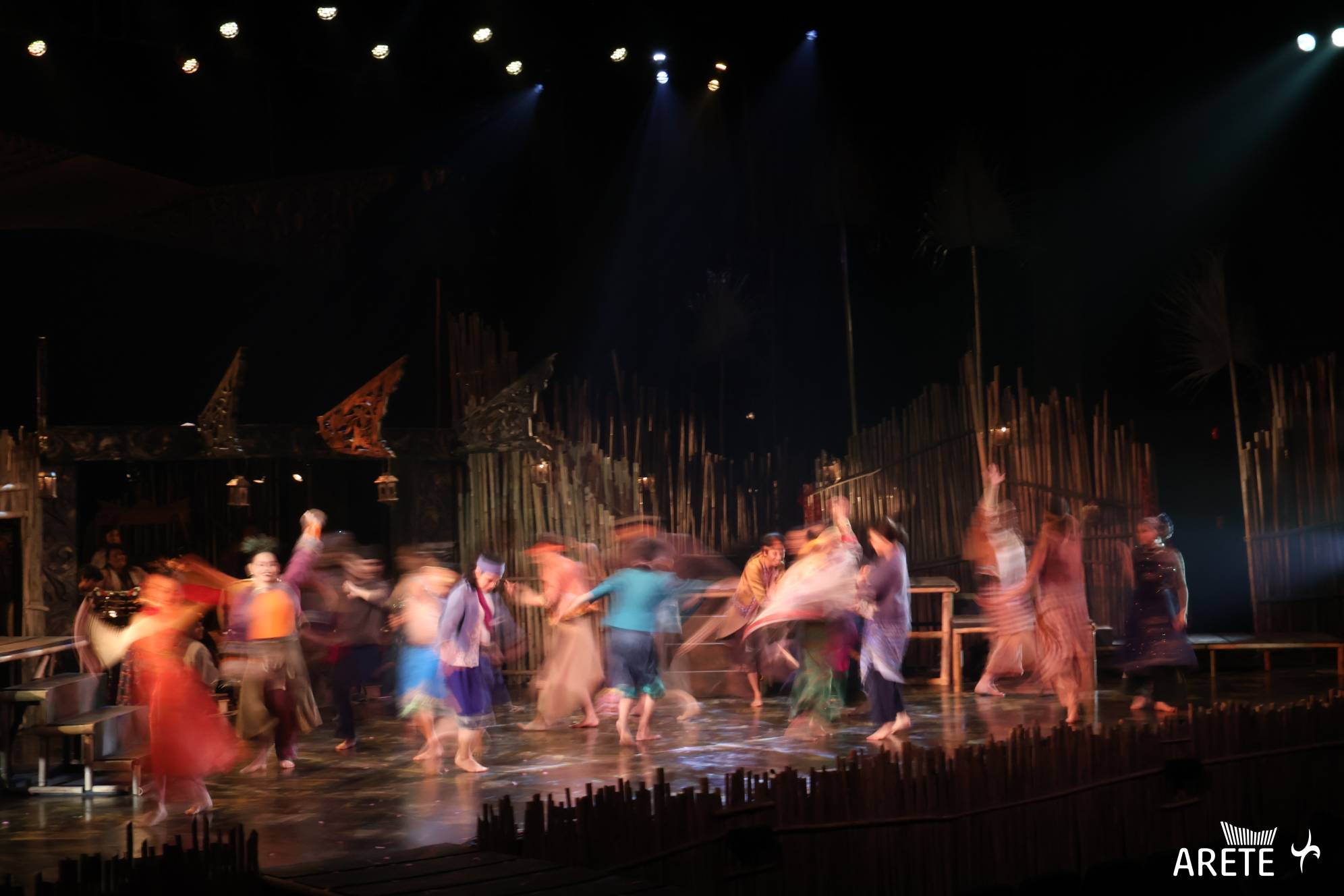
It brings everyone along for the big swings of the adaptation, from the elaborate fights and celebrations of the beginning to the jokey, romcom-like middle section to the big tragic finale.
That’s certainly a credit, of course, to choreographer Matthew Santamaria. His intricate work inspired by “Sama-Bajau natives from the Southern Philippines” creates a sensational and immersive experience akin to that of Jerome Robbins’ work in West Side Story, another Romeo and Juliet adaptation with similarities in its propulsive choreography.
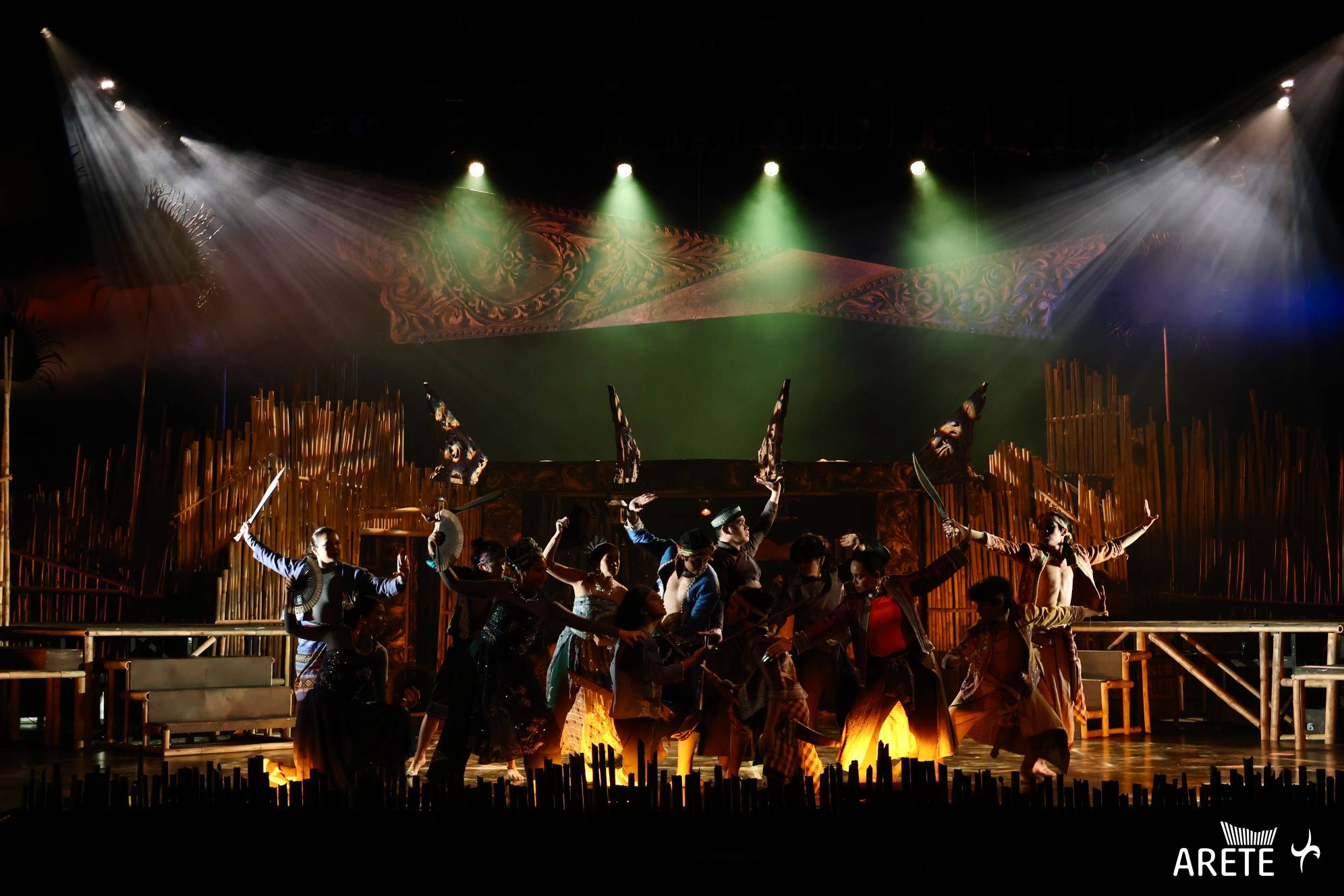
But it’s also a credit to the set design, a truly captivating staging that really puts the audience in the rural Mindanao community whilst allowing for some clever and decisive ideas that retain the original spirit of Shakespeare’s masterpiece. It feels lived-in and authentic to the communities it harkens toward despite its vastness, heightening the tension of the scenes even further.
Creating the Atmosphere of the Community
Set designer and theater veteran Tata Tuviera shared that the original production design by Bernal was intimate and small due to being performed at the Rizal Mini Theater. The challenge for this production was to create something that would fit the larger Hyundai Theater without losing the intimacy of Bernal’s original ideas.
“The design challenge was how to fill the cavernous stage of the Hyundai Hall, but at the same time [to] bringing the staging closer to the audience,” he said. “Since the Hyundai Hall has a massive apron (the stage in front of the proscenium and house curtain) that can easily separate the audience from the performers, I wanted to retain the intimacy that the original production had, by trying to push the action as close to the audience as possible.”
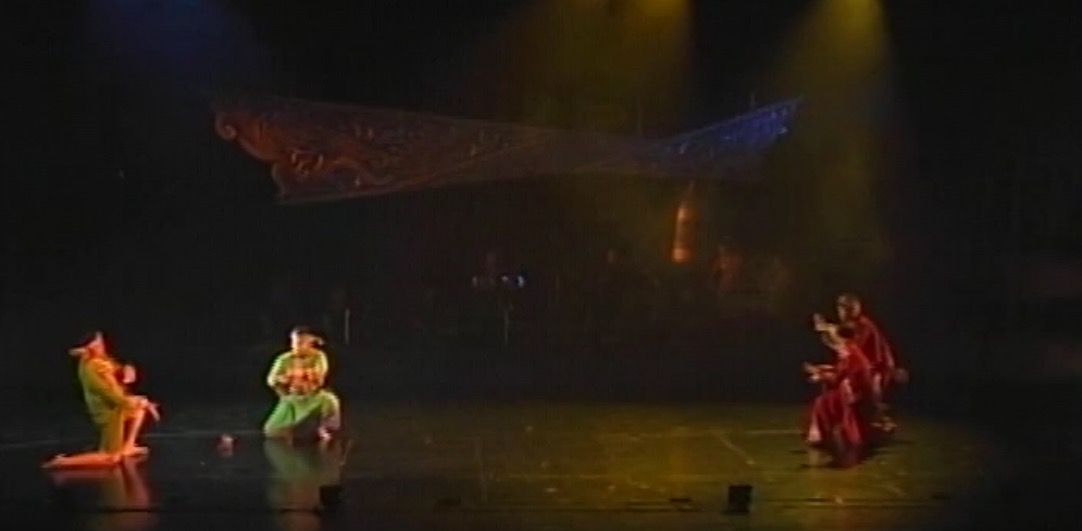
The biggest thing that Tuviera retained from the original Bernal design was the panolong on top of the stage. A panolong is a house ornament typically found in the ceilings of the front of the house, typically of the sultan and wealthy families of the Maranao people.
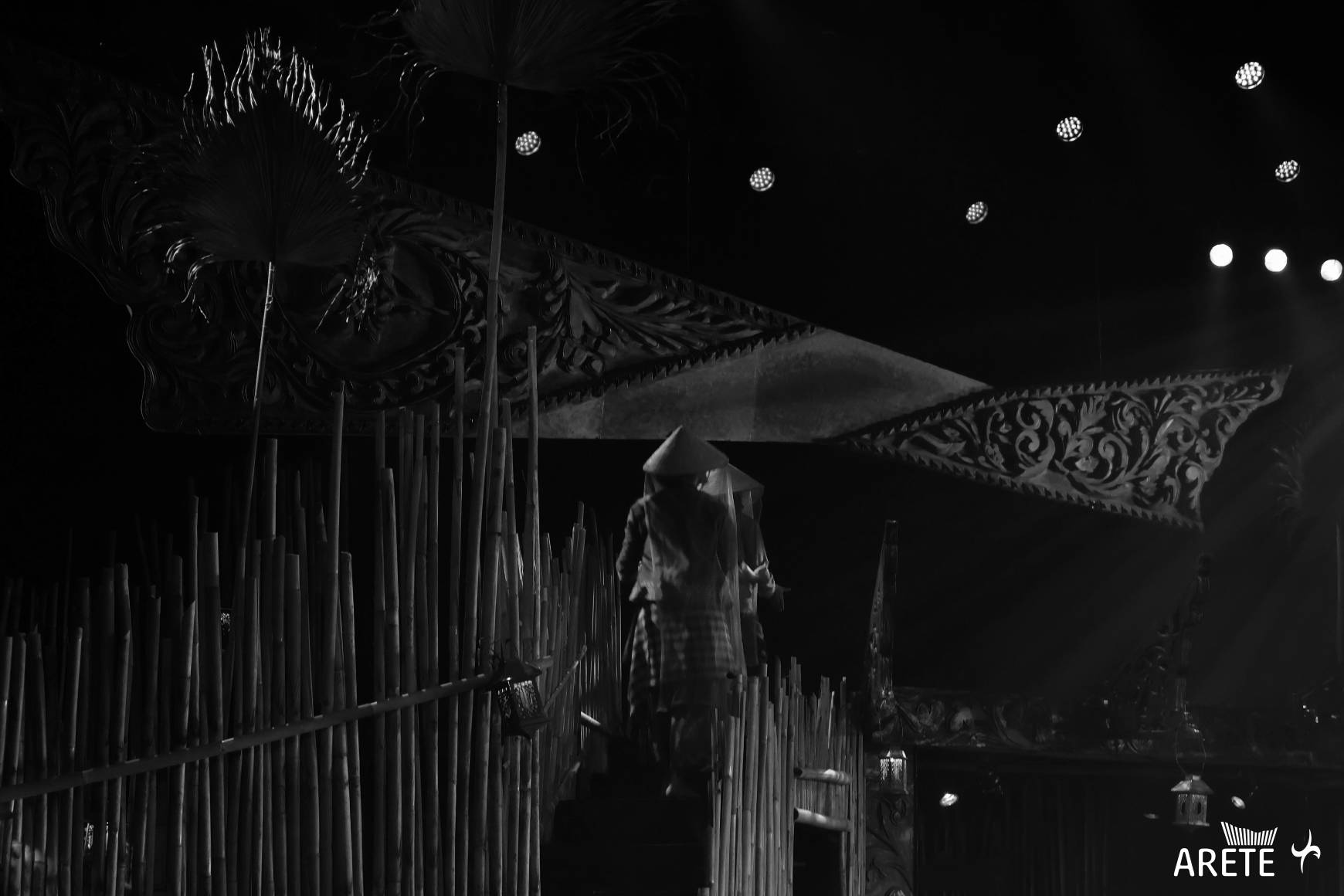
For the production, this curving beam with intricate carvings added a touch of regal expanse to the set—a sort of sky-like, eye-of-god feeling looming over the whole production. Tuviera kept the design, but made it “four times” bigger to fit the larger stage.
“The challenge wasn’t so much modernizing it, but re-contextualizing the staging of the action,” Tuviera said. “How can we still make it feel authentic and truthful to the story, but within the context that this is a made up Muslim community of the Rashiddin’s and Mustafa’s?”
Indigenous and Pre-Colonial
His eventual design ended up being a combination of different elements to evoke an indigenous feeling to the production. Tuviera liberally used bamboo stalks throughout, creating cresting walls that add a sense of homeliness to the proceedings. He even added the stalks to the front of the stage, as a way to immerse the audience even further to the setting and the action.
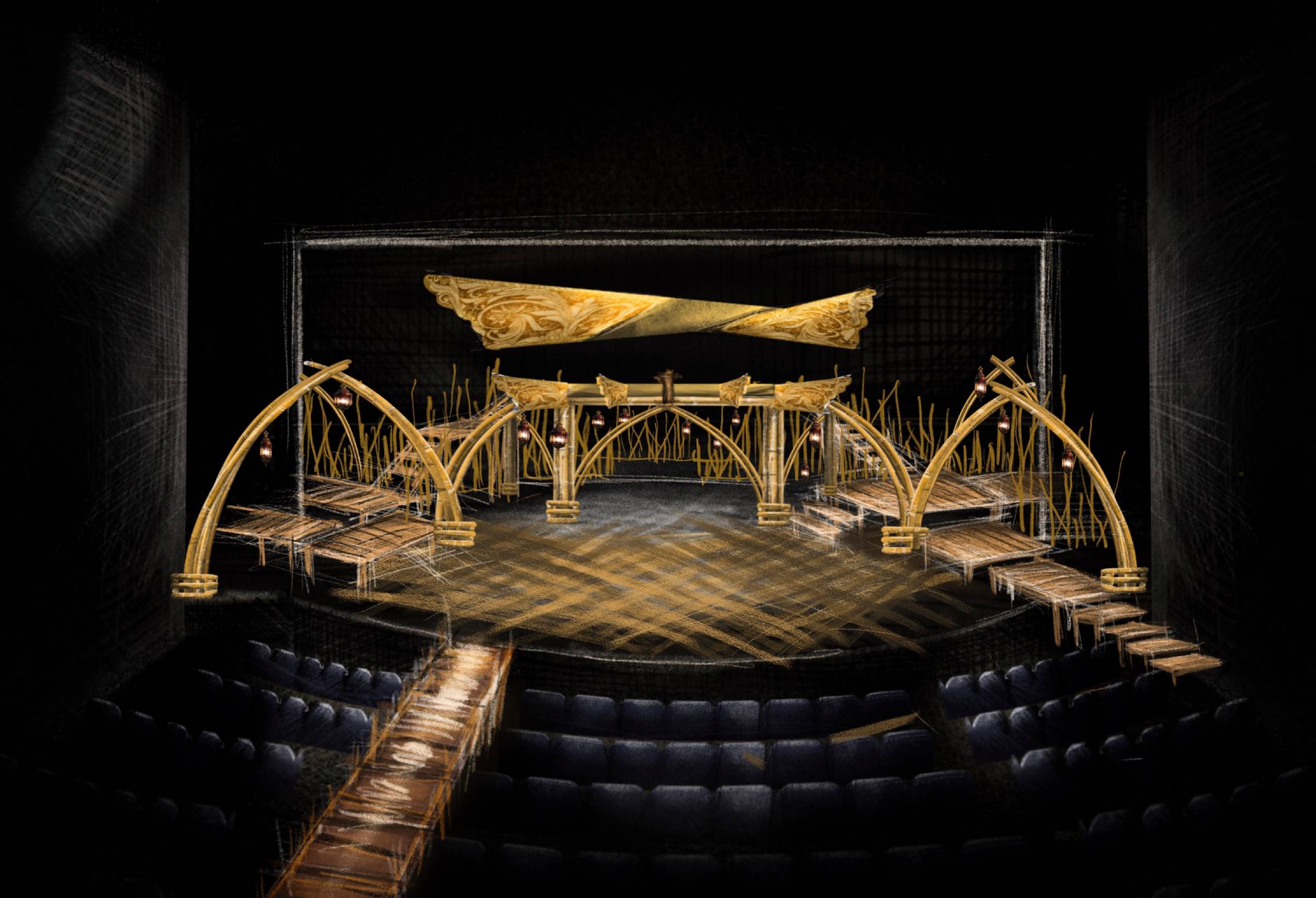
Tuviera explained that the use of bamboo harkens back to a “pre-colonial, Southeast Asian community” in shorthand, since materials like bamboo were used as the primary construction materials of the time.
“The design was initially more stylized, which was inspired by bamboo architecture and had weaving, weaving of cultures and families as its main metaphor,” he said.
He centered it with a large landing in the middle, which added a second floor to the set while giving the musicians an orchestral pit underneath the landing. Though an ingenious idea, Tuviera said that the production’s original staging wasn’t supposed to be that way.

“The second level of the set was where the musicians were initially supposed to be at, but there were some logistical concerns,” he said. “But positioning them underneath the structure worked better as they were more integrated into the action and it paid homage to original production. It also turned the musicians as the heart of the piece being enclosed in that area.”
Taytayan and Creating Intimacy to the Audience
Another interesting design element was a “taytayan” catwalk which spanned throughout the right side of the audience. During the play, it was utilized every time the Datu character came on stage, flower girls and servants at hand.
Tuviera said that this was inspired by the Japanese concept of Hanamichi, which choreographer Santamaria renamed “taytayan” as a Filipinization of the concept.
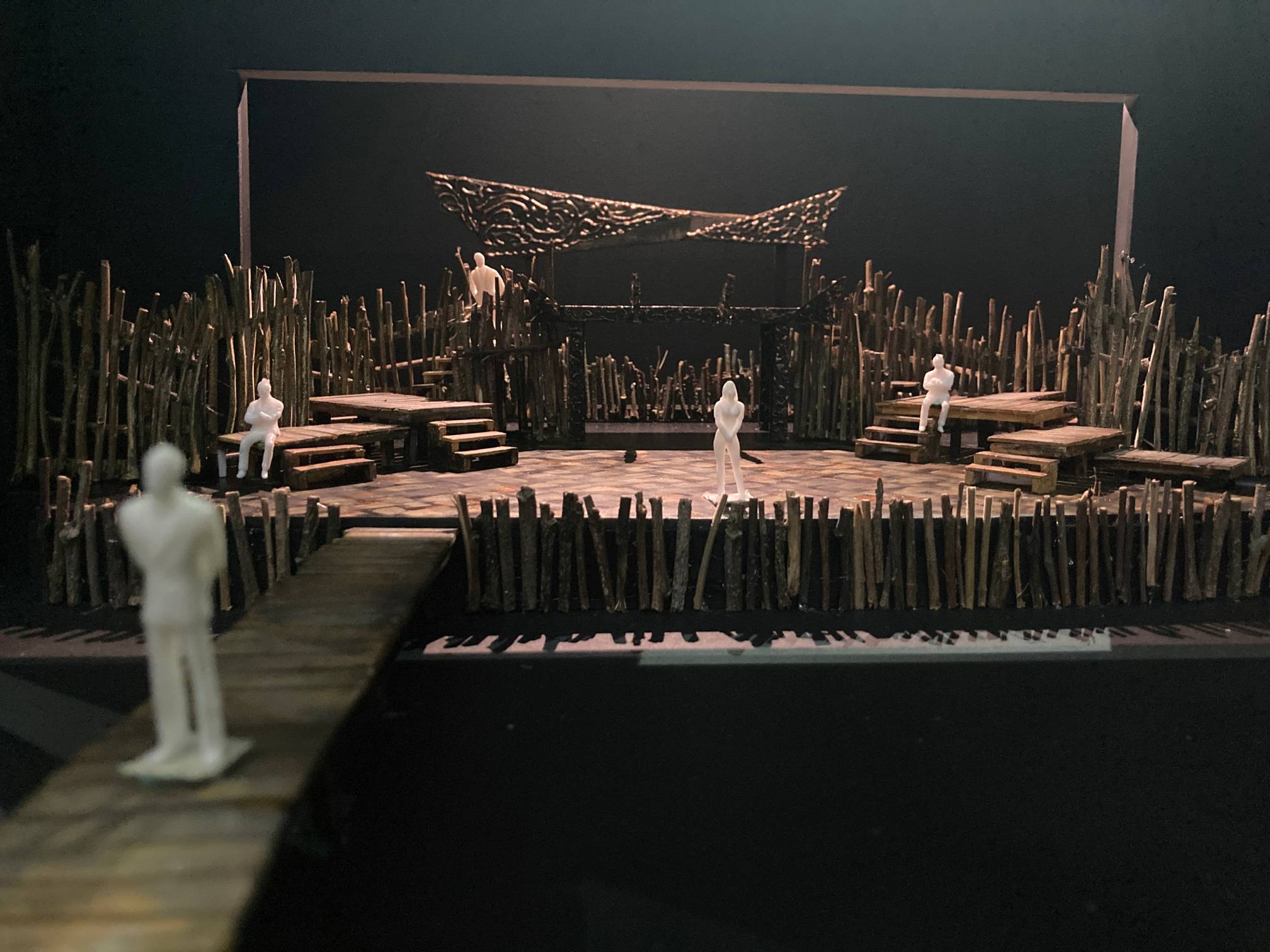
“It was the bridge to the outside world where we see the character Datu Piandao enter from, which also became the bridge to the spiritual world,” Tuviera said. “But it is also the bridge for the audiences to enter the world of Sintang Dalisay.”
Made with wood and steel bracing, the taytayan was meant only to facilitate the entrance and exit of the actors on stage. But, especially with the show this writer caught during the second run, its accessibility to the audience allowed some of the viewers to come up on the catwalk during the curtain call when the cast was dancing freely to the music.
“[The taytayan was] only meant for the entrance and exits of actors, so imagine the horror of the technical stage team when hordes of students decided to turn it into their dance floor after one of the performances,” he shared. “But the Sintang Dalisay and Arete teams always consider the safety of the actors and audiences by making everything structurally safe.”
Bringing the Classics to the Mainstream
However one sees it, the Tanghalang Ateneo’s staging of Sintang Dalisay is a success in terms of how properly and thoroughly the cast and crew were able to execute their vision. Tuviera especially seemed proud of the final product, enjoying how well-done the reimagined staging turned out.
“I just love how everything came together beautifully,” he said. “From the set, to the costumes, the lighting, actors, musicians, and the stage crew. It was a production that Ricky Abad would have been proud of, as he had very big ideas for the remounting of this show.”
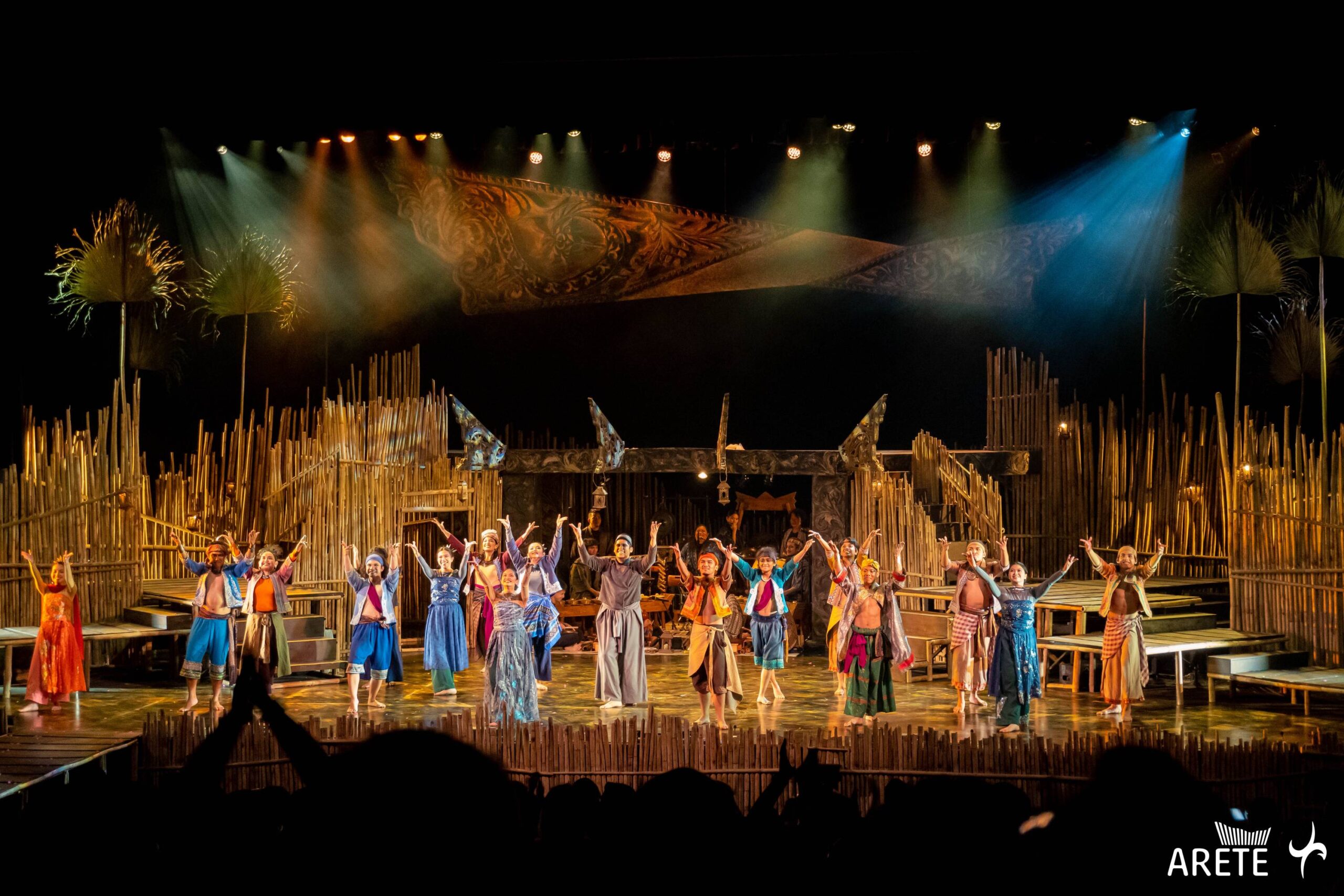
Tuviera hopes that this daring iteration of Sintang Dalisay will encourage future generations of theater people to be ambitious in their reach of the stories. He also hopes that artists will dig further into the collective past to mount something adventurous for audiences.
“The relevance of this piece is to bring back the classics to the mainstream, as well as re-introducing dance/Igal, Shakespeare, drama, prose…to a whole new generation of theater audiences, and letting them know that there are a plethora of ways of how to tell a story,” he said.
Photos by Sophie Prado and Jules Ballaran provided for by Tanghalang Ateneo. Sketches of the set design provided by Tata Tuviera.
Related reading: Ballet Philippines Presents a Reimagined Adaptation of Peter Pan

